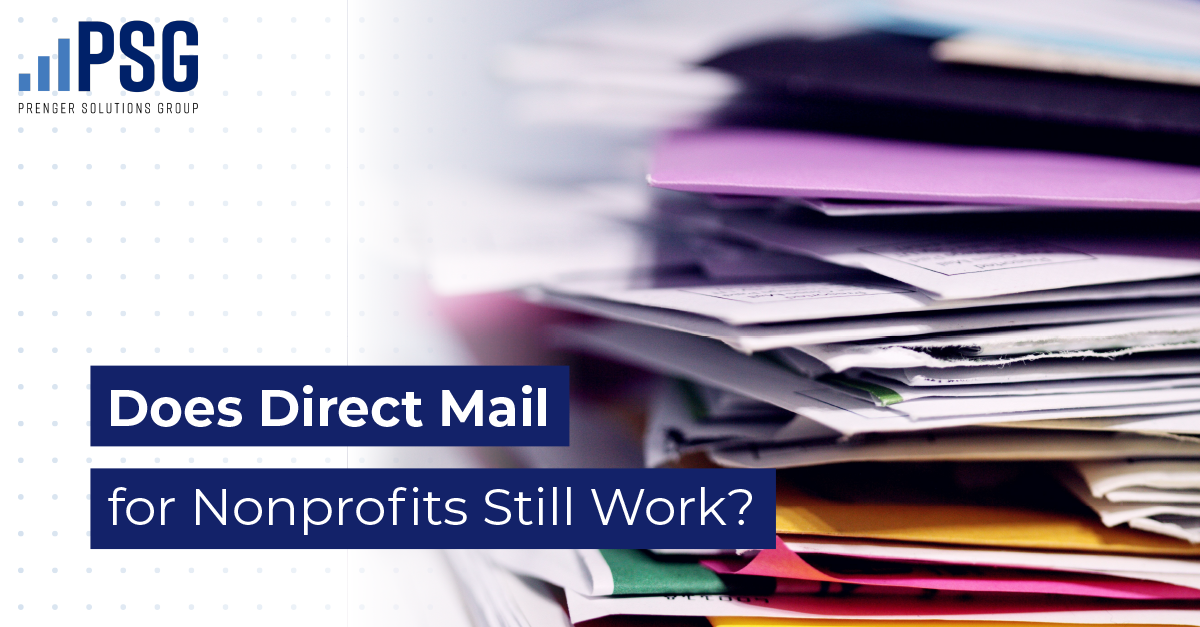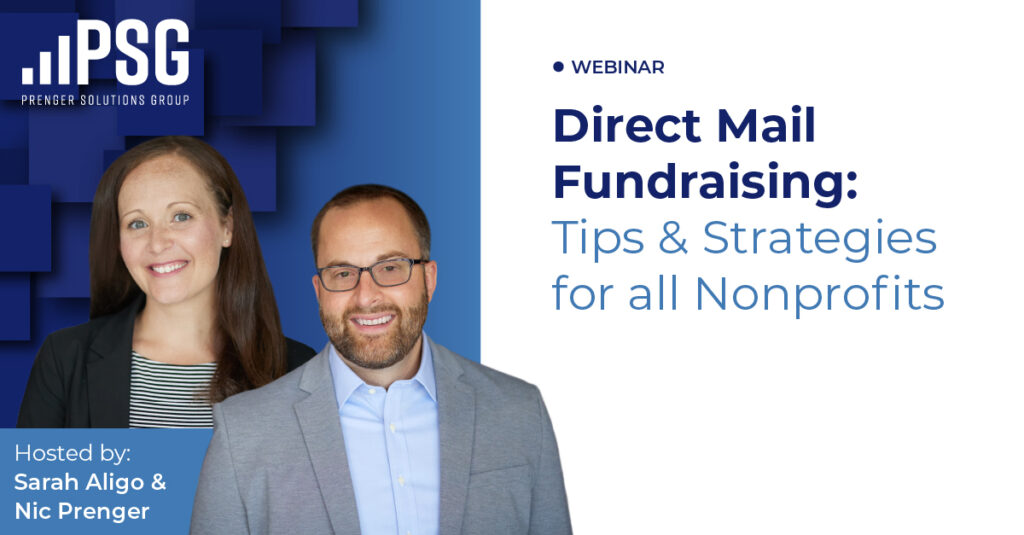Does direct mail for nonprofits still work? The truth is that direct mail fundraising is still a reliable revenue generator for today’s nonprofits.
Direct mail started appearing on the fundraising scene shortly after World War II when charities like the Easter Seal Society sought ways to expand their reach. It took off in the 1960s with the advent of the zip code.
Since then, direct mail fundraising has been the cornerstone for nonprofits of all sectors and sizes.
The question we get most often from clients is: Does direct mail fundraising still work for nonprofits now that everything is going digital?
Direct mail supporters say it is here to stay; asserting it has stood the test of time and is worth its weight in gold. Skeptics contend that digital fundraising is the new nonprofit workhorse.
Follow along as we present both sides to find out if direct mail is still king or if email fundraising is ready to take over.
The case for nonprofit fundraising emails
If you’ve found yourself wondering how something as archaic as direct mail can hold a candle to online fundraising, you’re not alone. With more and more people spending increasing amounts of time online, many feel digital fundraising is the best avenue for reaching donors. With the assumption that direct mail is nothing more than junk—unappreciated and tossed aside by American households—many nonprofits think email fundraising is more attractive to donors and generates better results.
After all, when it comes to email’s potential, the sky is the limit. Many nonprofits use email to send newsletters and solicitations to donors and prospects, but that’s only the beginning. Follow our fundraising email best practices: you’ll learn how to create heartfelt, personalized emails that are fun and engaging, using colorful graphics, inspiring videos, links to website blogs, and so much more.
There’s no denying that email is an excellent engagement tool for busy fundraisers. It allows more frequent touchpoints to build relationships with donors, personalized messaging, and nimble content. Not to mention the ability to quickly reach segmented audiences with dynamic copy without spending a dime.
Budget-conscious fundraisers question whether direct mail is worth the investment when you consider the cost to print, produce, and mail an appeal letter versus the nominal cost of an email campaign. Throw in supply chain nightmares, skyrocketing paper prices, perennial postage hikes, and fiscal cutbacks, and it’s understandable why some may say it’s time to retire direct mail fundraising.
But before you stop paying for stamps and paper and switch to email fundraising exclusively, let’s hear the case for direct mail fundraising.
The case for nonprofit direct mail campaigns
There’s something special about receiving a personalized piece of mail. From the anticipation of what lies waiting in your mailbox to the sound of ripping open the envelope, pulling out the contents, and feeling the weight and texture of the paper, direct mail engages the senses and emotions in ways that email cannot.
Additionally, direct mail has a longer shelf life than email, which is often deleted seconds after opening. Your direct mail fundraising appeal might sit on a kitchen counter for days, possibly weeks, after your donor opens it. Even if it does not elicit an immediate gift, your direct mail fundraising letter remains a tangible reminder of your nonprofit and mission.
Perhaps the biggest argument for direct mail fundraising is that it yields a much higher response rate than other channels. Studies show that the average email response rate is roughly 0.1%; by comparison, the average direct mail fundraising response rate is 5.3%. Higher response rates equate to more donors in the door, which means more dollars for your nonprofit mission.
As it turns out, there’s a scientific explanation for the power of direct mail. A neuroscientific study titled “A Bias for Action” concluded direct mail “requires 21 percent less cognitive effort to process and elicits a higher brand recall; has a motivation response of 20 percent higher than digital media; is processed quicker; and is more likely to drive an action.”
Simply put, direct mail builds deep connections and makes an impression on donors in ways digital marketing cannot.
The verdict: a multi-channel approach
As the evidence shows, both direct mail and email fundraising hold value in today’s nonprofit world. Email fundraising is quicker and less expensive and lends itself to dynamic, attention-grabbing content. Direct mail is personable, tangible, and, most of all, highly effective as a fundraising channel.
That said, the question isn’t whether nonprofits should replace direct mail fundraising with digital fundraising but rather how they can create a strategy where both channels enhance one another and achieve optimal success.
At Prenger Solutions Group, we like to use the chili dog metaphor. A chili dog is not complete without the foundation of a hot dog and a bun, and a fundraising program is not successful without direct mail.
And when you think about a chili dog, what makes it taste so delicious and stand out? All the fun add-ons. In a fundraising program, digital components are the tasty fixings: your online donation page is the mustard, email campaigns are the relish, and social media is the onion. You get the picture.
Creating a multi-channel approach to fundraising campaigns doesn’t have to be as time-consuming as it might sound. Automation tools like AutomateGenius can help your fundraising team send personalized email messages to every donor. Let the team show you how with a demo today.
As you create your direct response fundraising strategy, make sure you build it on the foundation of direct mail bolstered by a diverse array of cross-channel digital components. This strategy will garner the best results, raising more money and improving your relationship with donors.
For more insights like this, sign up for the Prenger Solutions Group newsletter today.
















